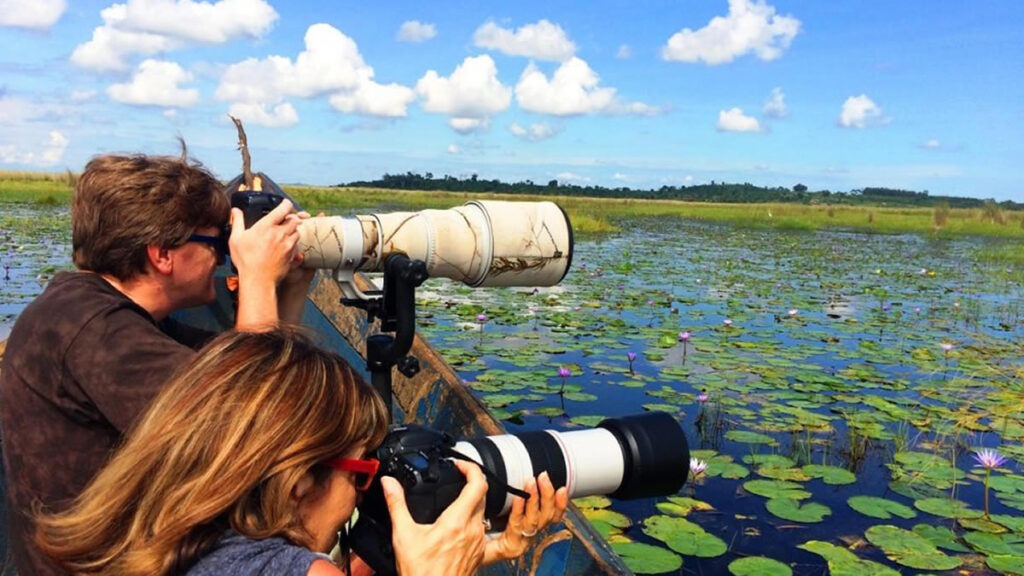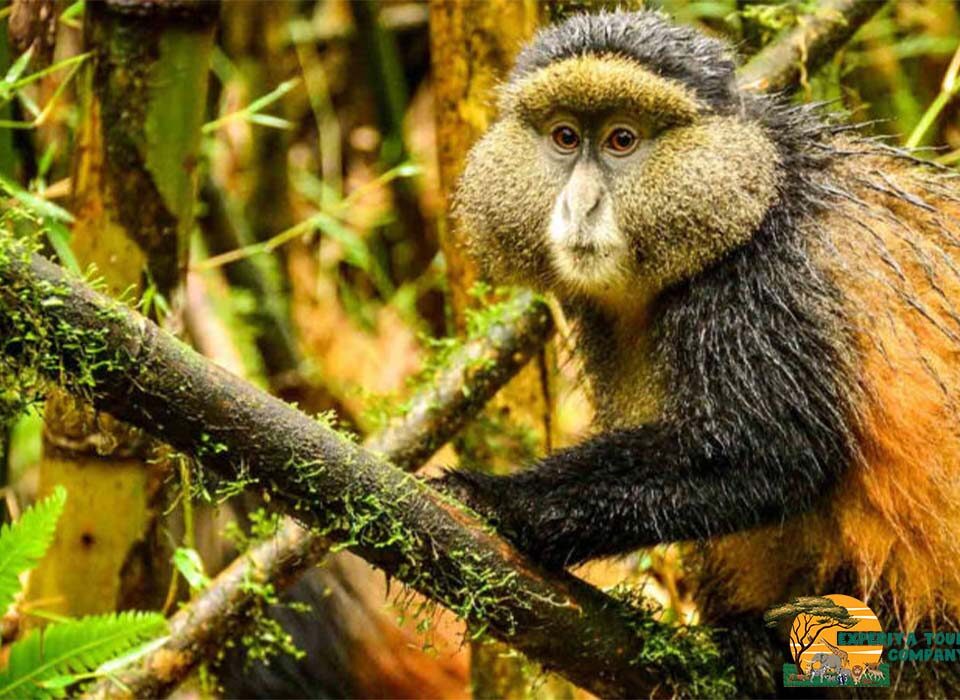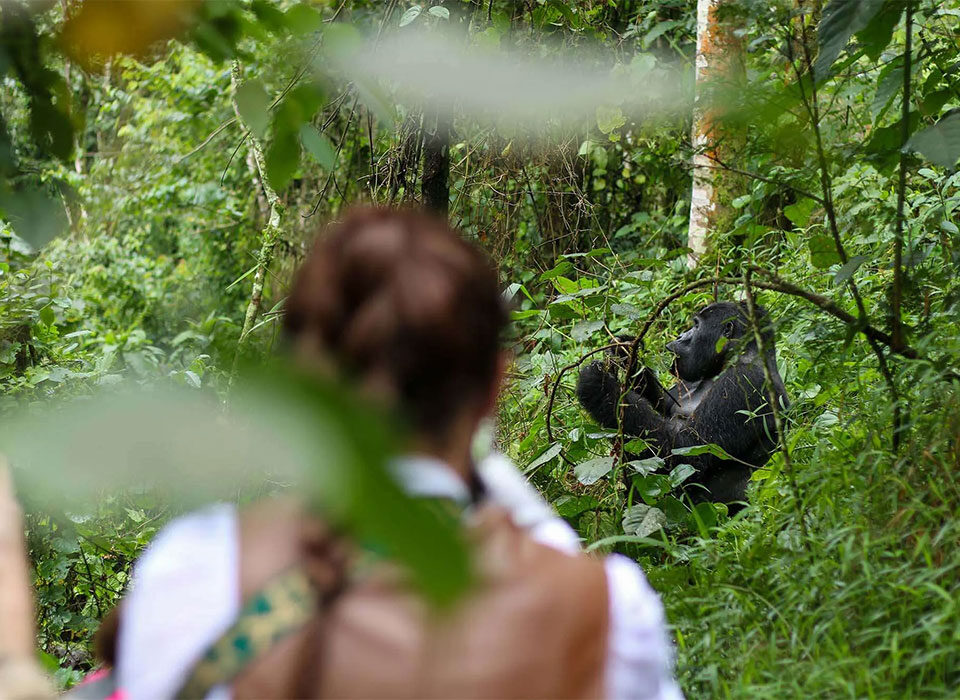
Fishing in Uganda’s Great Lakes – Best Spots, Seasons & Experiences with Experiya Tour Company
October 25, 2025
Crater Lakes Near Fort Portal – Discover Uganda’s Hidden Natural Wonders with Experiya Tour Company
October 25, 2025Best Locations for Scenic Photography in Uganda – Explore with Experiya Tour Company

What’s the Best Location for Scenic Photography in Uganda?
Few places in the world rival the natural beauty and diversity of Uganda, the “Pearl of Africa.” From mist-covered mountains to rolling savannahs, from crater lakes to tropical rainforests, Uganda offers a breathtaking range of landscapes that captivate the soul — and the lens. It’s a country that seems designed for photography, where every sunrise paints the sky in gold, every waterfall whispers with motion, and every face tells a story.
Whether you’re a professional photographer seeking dramatic landscapes or a traveler eager to capture unforgettable memories, Uganda’s scenic diversity makes it one of the most photogenic countries in Africa. But the question remains: what’s the best location for scenic photography in Uganda?
The truth is, Uganda is filled with countless picture-perfect locations — each offering something different. From the snowcapped peaks of the Rwenzori Mountains to the tranquil waters of Lake Bunyonyi, from the open plains of Queen Elizabeth National Park to the thunderous Murchison Falls, Uganda’s beauty comes alive through every frame. Let’s explore some of the most stunning places that make Uganda a photographer’s paradise.
1. Bwindi Impenetrable National Park – Mystical Forests and Mountain Gorillas
Hidden deep in the southwestern highlands, Bwindi Impenetrable National Park is one of the most iconic locations in Africa — and a dream come true for photographers. This UNESCO World Heritage Site is a place of ancient rainforests, misty ridges, and lush valleys, home to one of the world’s last remaining populations of mountain gorillas.
Photographing in Bwindi is like stepping into another world. The morning fog that drapes over the forest canopy creates a mystical ambiance, while light filtering through the dense foliage adds a touch of magic to every shot. The forest teems with life — from gorillas and chimpanzees to colorful butterflies and birds — offering endless opportunities for both wildlife and landscape photography.
The real highlight, however, is capturing a close encounter with mountain gorillas. Watching these gentle giants in their natural habitat, surrounded by the emerald-green vegetation, is an experience so powerful that every photo feels like a story frozen in time.
Photography Tip: Early morning treks offer the best lighting conditions. Carry a camera with good ISO performance to capture gorillas in the low light of the forest.
2. Murchison Falls National Park – Power and Drama in Motion
In the northwest of Uganda lies Murchison Falls National Park, home to one of the most dramatic natural spectacles in Africa — Murchison Falls. Here, the mighty River Nile squeezes through a narrow 7-meter gorge before exploding into a thunderous cascade that plunges 43 meters into the valley below.
For photographers, Murchison Falls is pure magic. The contrast of white water against dark rock creates a powerful composition, while the mist and rainbows rising from the spray add an ethereal touch. Long-exposure shots here turn rushing water into silky ribbons of motion, making for breathtaking images.
But Murchison isn’t just about the falls. The park’s sweeping savannah plains are filled with wildlife — elephants, giraffes, lions, buffaloes, and antelopes — and the sunset drives along the Nile Delta offer spectacular silhouettes against glowing orange skies. The combination of waterfalls, wildlife, and river landscapes makes Murchison Falls one of Uganda’s best all-around photography destinations.
Photography Tip: Use a neutral density (ND) filter to capture long-exposure shots of the waterfall and take sunrise or sunset images near the delta for softer light.

3. Lake Bunyonyi – The Lake of a Thousand Islands
Southwestern Uganda’s Lake Bunyonyi is a landscape photographer’s dream. Translating to “the place of many little birds,” this lake is dotted with 29 small islands, each uniquely shaped and surrounded by terraced green hills that rise steeply from the water’s edge.
At dawn, Lake Bunyonyi is shrouded in mist, creating surreal reflections and layers of blue and green tones that look almost painted. The calm surface of the water mirrors the sky, while dugout canoes gliding silently across the lake offer perfect subjects for storytelling photography.
This lake is not only scenic but also peaceful — a sanctuary for creativity. Whether you’re capturing aerial shots of the islands, wide panoramas from the surrounding hills, or close-up images of local life, every frame tells a story of serenity and natural harmony.
Photography Tip: Sunrise and early morning mist offer the best light. Try shooting from Arcadia Cottages Viewpoint or BirdNest Resort for panoramic views.
4. Rwenzori Mountains – The Mountains of the Moon
For those seeking grandeur and challenge, the Rwenzori Mountains — also called the “Mountains of the Moon” — provide some of the most striking photographic landscapes in Africa. Rising over 5,000 meters, this UNESCO World Heritage Site is home to snowcapped peaks, glaciers, waterfalls, and alpine meadows.
The terrain is rugged and mystical, changing dramatically as you ascend from tropical forest to bamboo, heather zones, and eventually icy summits. The contrasts in texture and color are incredible — moss-covered trees, giant lobelias, and crystalline streams all set against the backdrop of jagged mountain peaks.
For landscape photographers, the Rwenzoris offer endless opportunities for capturing nature’s drama. From fog-wrapped valleys to reflective alpine lakes, every step reveals a new composition waiting to be framed.
Photography Tip: Bring wide-angle lenses for sweeping vistas and waterproof gear — the mountains are often misty and wet.
5. Queen Elizabeth National Park – Savannah Meets Water
Few places offer as much photographic diversity as Queen Elizabeth National Park in western Uganda. Spanning from the Rwenzori foothills to the Kazinga Channel, this park encompasses grasslands, crater lakes, wetlands, and acacia woodlands — making it ideal for both landscape and wildlife photography.
The park’s Ishasha Sector is famous for its tree-climbing lions, a rare sight that draws photographers from around the world. Capturing these majestic cats lounging on fig tree branches against the golden light of evening is a dream shot for any wildlife enthusiast.
Elsewhere, the Kazinga Channel offers opportunities to photograph hippos, crocodiles, and elephants along the shoreline, while the crater lakes in the Katwe area provide incredible aerial perspectives and reflections. The diversity of habitats ensures that every photo shoot feels fresh and unpredictable.
Photography Tip: Visit during the golden hours — early morning or late afternoon — when wildlife is active and lighting is soft.
6. Sipi Falls – Uganda’s Mountain Waterfall Wonder
On the slopes of Mount Elgon in eastern Uganda lies Sipi Falls, a series of three stunning waterfalls cascading down rugged cliffs. The tallest drop is over 100 meters, creating a powerful display of water and mist framed by lush vegetation and dramatic rock faces.
Sipi is a paradise for photographers who love movement and texture. The interplay of light and mist during sunrise and sunset produces incredible color gradients. Long-exposure shots of the water transform the scene into a masterpiece of motion and stillness.
The surrounding hills and coffee plantations offer additional compositions — from panoramic landscapes to intimate portraits of local life. Hiking trails around Sipi Falls provide access to multiple viewpoints, allowing you to capture the waterfalls from above, below, or even behind the curtain of falling water.
Photography Tip: Experiment with slow shutter speeds to capture silky water effects, and bring a tripod to stabilize your camera on uneven terrain.
7. Lake Victoria – Reflections of the Great Lake
As Africa’s largest freshwater lake, Lake Victoria provides countless opportunities for photography. Its vast horizons, fishing boats silhouetted against crimson sunsets, and bustling lakeside communities create a perfect blend of nature and culture.
The Entebbe and Jinja shorelines are particularly photogenic, offering access to beaches, islands, and harbors. Capture fishermen casting nets at dawn, reflections of palm trees in calm waters, or colorful local markets near the shore. The golden light during sunrise and sunset paints the lake in mesmerizing shades of orange and blue.
Photography Tip: Visit Mabamba Bay Wetland on the lake’s edge for bird photography — it’s one of the best places to spot the rare shoebill stork.
8. Kidepo Valley National Park – Untamed Beauty
For pure wilderness and dramatic landscapes, Kidepo Valley National Park in northeastern Uganda is unmatched. This remote and rugged park, nestled between mountains and semi-arid plains, offers some of the most striking scenery in East Africa.
Photographers will love Kidepo for its raw, untouched character. The golden savannah stretches endlessly, dotted with acacia trees and herds of elephants, buffalo, and zebras. The Narus Valley provides exceptional wildlife photography, while the Morungole Mountains offer sweeping views over the plains.
Sunsets here are spectacular, with the red African sky fading into purple shadows over the distant hills — a sight every photographer dreams of capturing.
Photography Tip: Carry a telephoto lens for wildlife and a wide-angle for landscapes. The dry season (December to March) offers the clearest skies.
9. Crater Lakes Region – Reflections of Paradise
Around Fort Portal and Kibale National Park, the landscape transforms into a wonderland of volcanic crater lakes. These turquoise waters, surrounded by green hills and farmlands, are among Uganda’s most scenic spots for photography.
Each lake has its charm — Lake Nyinambuga, Lake Nkuruba, and Lake Nyabikere are particularly stunning, reflecting the surrounding forests and sky like mirrors. The combination of symmetry, color, and serenity makes this region ideal for both drone and landscape photography.
Photography Tip: Shoot during early morning or late evening for calm reflections and vibrant colors.
10. Kampala and Jinja – Culture, Color, and the Human Element
For photographers who love capturing people, architecture, and urban energy, Uganda’s cities also have a story to tell. Kampala, with its lively markets, street scenes, and skyline views from Kololo Hill, provides a colorful cultural dimension.
Meanwhile, Jinja, the adventure capital of East Africa, offers a mix of scenic and action photography — from white-water rafting on the Nile to serene boat rides at sunset. The Source of the Nile monument is one of the most iconic photography spots in Uganda.
Photography Tip: Use a mix of portrait and street photography to capture the rhythm of local life.
Visit Uganda with Experiya Tour Company
From misty mountains to cascading waterfalls, from vast savannahs to still crater lakes, Uganda is a photographer’s dream come true. Every corner of the country tells a story through its landscapes, wildlife, and people. Whether you’re chasing golden light, dramatic skies, or intimate wildlife moments, Uganda offers endless possibilities to fill your camera with beauty and meaning.
To make your photography journey seamless and extraordinary, travel with Experiya Tour Company — Uganda’s trusted adventure and safari specialists. Experiya offers tailor-made photography tours to Uganda’s most scenic locations, guided by experts who understand lighting, timing, and logistics. Whether you want to capture gorillas in Bwindi, waterfalls in Sipi, or wildlife in Murchison, Experiya ensures every moment is picture-perfect.
With Experiya, you don’t just take photos — you capture the soul of Uganda.



